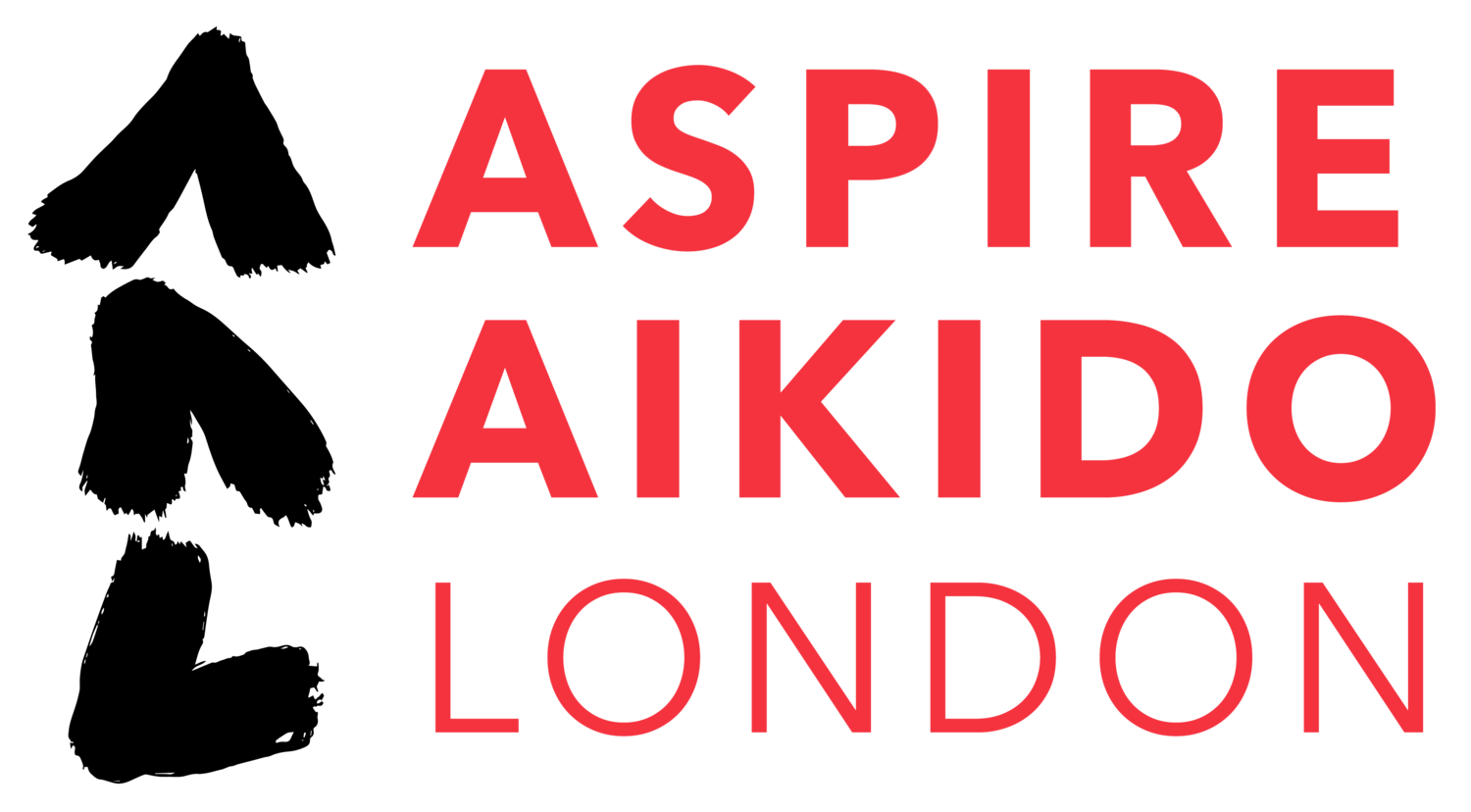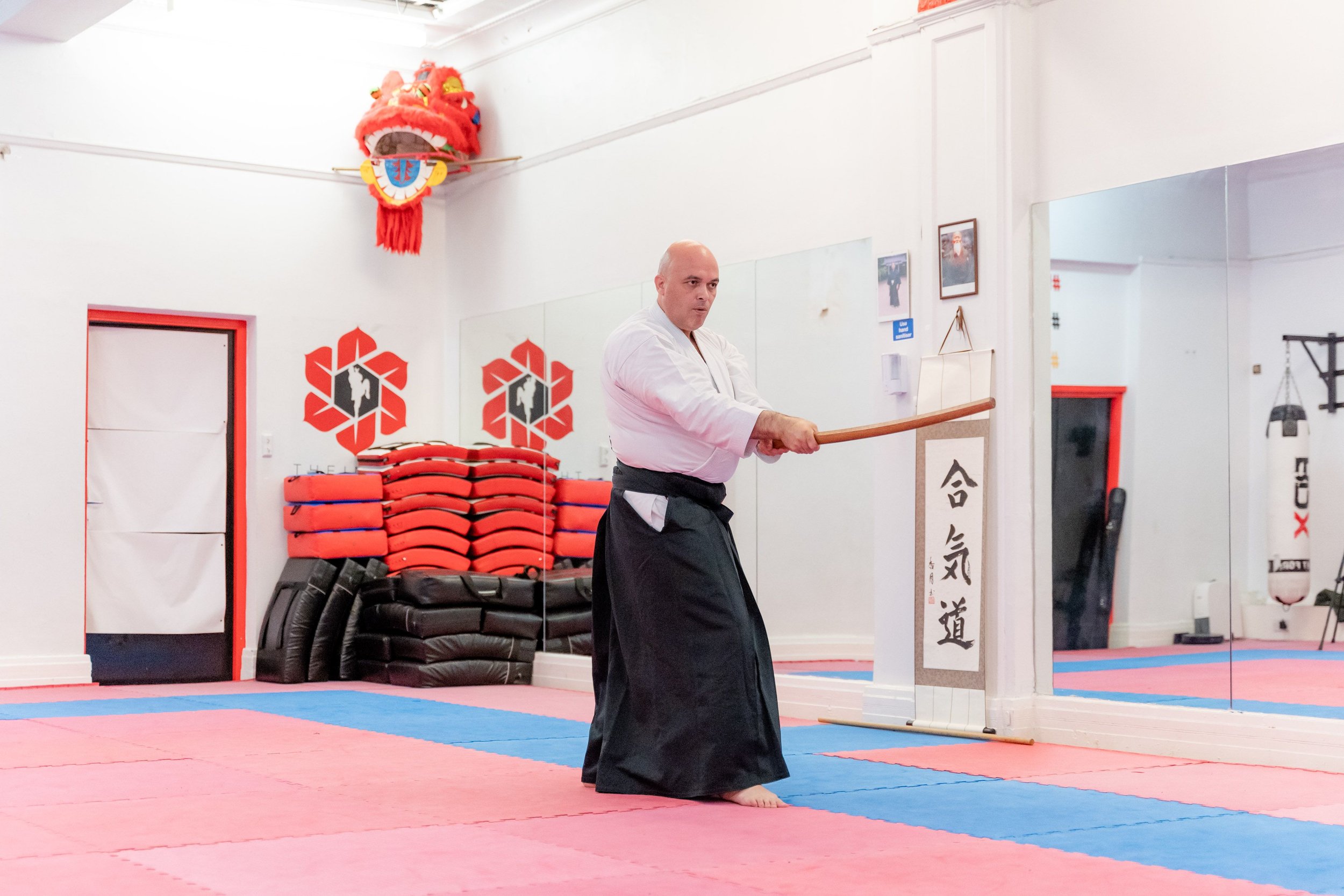Internal Feeling with Aikido
This is perhaps a difficult topic to discuss here because it simply relates to an inner sensation or feeling that is often challenging to describe in words and it also manifests with a certain state of mind too.
I will try to discuss this as clearly as I can sharing from my personal experience. This is of course my personal experience so I am not advocating that this is the only way to feel internal feeling with Aikido.
My understanding after practicing for over 34 years, is that there is something that works deeply internally when you practice Aikido, but it has to work with a very specific mindset. A calm mindset, good hearted and with an empty mind too all these working together.
As a beginner, when we speak ‘internal feeling’ it will simply mean absolutely nothing to them. A new practitioner will concentrate on copying the external shape of what appears to be with any specific techniques we demonstrate, which is absolutely fine and normal, as we all started there too. So talking about internal feeling with beginners will be a pointless discussion to be had. But one can say, use your hips to execute this movement etc. The discussion of hips will be of help for the long run in my view.
If after years of practicing Aikido (it may take 10 years or more) if you do not feel any inner sensation or feeling from Hara, you should perhaps question how you should begin to practice for the foreseeable future. Because Aikido is much more than mere execution of physical Aikido techniques.
The key lies with being honest with yourself, be open and be critical of your Aikido, which will help you guide what you must do, to work towards finding this internal feeling or sensation. If you adopt ‘kaizen’ approach (a blog that was written, which you may find here https://www.aspireaikidolondon.co.uk/blog/adopt-kaizen-approach-when-you-practice-aikido ), you will surely be on the right path to question where you are in your own personal Aikido journey.
From my experience, the discovery of internal feeling has begun with the study of Ken Suburi and in particular with the 1st Ken Suburi. With the 1st Ken Suburi, you begin to do the cut in a physical manner just the same as any beginner would do but gradually, we look for alternative way to cut avoiding the use of shoulders and arms simply because it starts to hurt doing the same cuts repeatedly. Your Teacher will tell you to “relax your shoulders and arms and cut from the Hara (centre)”.
You hear this sentence and you are not sure what this means at first. So you keep on doing what you think you can do at your own pace. The footwork must be maintained throughout the cut and you realise quickly that it is more complicated than thought.
You need to cut and maintain the correct footwork during the whole cut and back into Ken No Kamae. So you work on the physical shapes for a while and try and figure out how to do the cut and footwork correctly but you gradullay begin to see that there is a need to link the cut and the footwork movement together. So you try and do this at the same time and you find that you are not in the right pace with the upper and lower body. Both are working on their own.
So you observe your Teacher, or you may look at Morihiro Saito Sensei videos and you do notice ‘how clean and simple’ their movements appear to be with the cut. They cut and move in perfect harmonisation at the same time all as One move with cut and footwork moving together.
So again by sharing my personal experience, I became intrigued with understanding this part of cutting as One move.
I kept (and continue to keep) a beginners mind and knew that there had to be something more than just the cut and the foot work to be able to cut together with the feet and arms. And that is how I looked deeper trying to find a relax cut synchronised with legs and upper body functioning as One move.
The more I was able to relax the more I could feel my movements eventually emerging from hips (and also known as centre or Hara) in simple terms. It started small but with confidence and with repetition, I began to understand better my hips movement such as pulling my right hip to bring the Ken upward and to bring my front right leg back towards my left foot. Then when I cut down, it is an action of pushing back my right hip forward and pulling my left hip to the side during the final cut with 1st Ken Suburi.
1st Ken Suburi is in my honest opinion, the hardest technique in Aikido and it also represents the ‘heart’ of all Aikido techniques. All movements we do begins with hips similar to the 1st Ken cut.
A Ken cut that looks so simple in itself but yet is so hard to do as it is so detailed in its simplicity and it requires to be done exactly as is, No more No less. So, for this reason, 1st Ken Suburi will take years of repetition and constant dedication with perseverance. One must adopt the right mindset I describe earlier too.
But the reward is immense when you begin to feel what this cut is meant to be, an inner sensation feeling begins to take place.
When you discover such feeling, you then begin to realise more and more that the cut is not done by mere arms raising the Ken with right leg moving on its own but all these are done with your hips. Your hips become the command centre for all movements that are about to happen. This also applies for the whole of Aikido too.
So if you remove the Ken from your hands, you should still feel the same hips feeling with Taijutsu. If you pick Tai No Henko, this technique should be no different than 1st Ken Suburi i.e. done with hips NOT the arms and legs moving separately.
An advanced Aikidoka will actually see if an Aikidoka is using hips or not when doing the techniques. The advanced Aikidoka will notice this when they too have found this inner feeling. It will profoundly change their understanding and their eyes will visualise something much more differently than any beginner.
This also brings the subject of whether or not one should be learning weapons a blog that I also wrote, which you may read this link https://www.aspireaikidolondon.co.uk/blog/weapons-or-no-weapons-in-aikido
I am convinced that learning with weapons will help you find this inner feeling.
An Aikidoka who does not study weapons may find it hard to feel such feeling, as there could be continuing with what I would call a mere physical Aikido with techniques that lack inner feeling. Aikido techniques must be done with strong inner feeling and connection with partner.
Connecting with partner as one, blending with Awase, moving without struggle with hips rather than shoulders and biceps to make the movement happen.
Hips are the biggest joints of our body so there is a good reason why we should use them rather than our smaller joints such as shoulders.
When one uses hips power, they can overcome anyone no matter how big they are. Our Founder Morihei Ueshiba was only 5ft2 and was able to overcome multiple attackers at once and with ease. He was truly remarkable at using hips power.
The more relaxed we become the more connected we become with our hips and it is where our first Awase (blending) begins with our own body synchronising hips with lower and upper body together.
Our strong practice method learning to connect with our partner from Kihon practice (static) and Ki No Negara (moving) will help build hips feeling in Aikido too.
Awase becomes an essential component which is involved in all our techniques both Kihon and Ki No Negara. We seek strong connection with your partner but this starts with our hips first before overcoming any partner.
There are, of course, many more points to be adding to our Aikido training but one of them I can reveal is for Tori to keep a rhythm in place whether it be Kihon or Ki No Negara, your rhythm must be in tempo, just like the beat with music we stay in tune with our hips and partner connection.
The inner feeling grows eventually stronger and you can sense inner Triangle, Square, Circle and Spiral internal feelings that will manifest inside from our Hara and outside with manifestation of our Aikido techniques, both of which will work for ever together…

